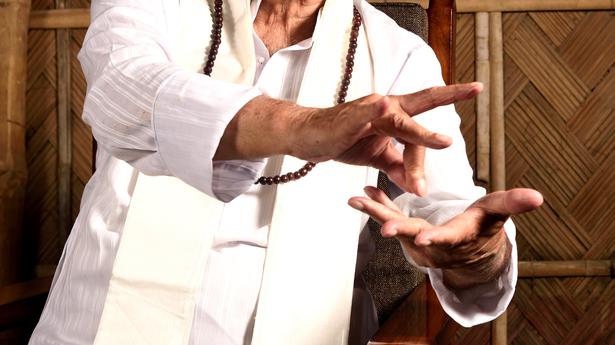
Sattriya’s journey from monasteries to the modern stage
The Hindu
Veteran exponent Jatin Goswami on how Sattriya, once the preserve of male monks, today features several women artistes and new-age interpretations
Jatin Goswami, a revered Sattriya guru, performer, choreographer and scholar, has ceaselessly worked since the 1960s to popularise the dance form that was originally a medium of worship at Sattras (monastries), mainly on the Majuli island in the Brahmaputra river, and in other parts of Assam. He established dance institutions such as Pragjyoti Kala Kendra, Alok Shilpi Sangha and Sattriya Academy to train several young enthusiasts. Apart from contemporarising its technique and repertoire to take Sattriya to audience worldwide, he has authored many books tracing the dance form’s almost 500-year-old journey. Owing to efforts of prominent artistes like him, Sattriya was accorded a classical status in the year 2000. The latest among the long list of honours and awards the veteran has received over the years, is the Sangeet Natak Akademi Fellowship. He talks about how, despite religious components being the defining feature of the dance form, he has strived to showcase its artistic and creative aspects.
How were you drawn to learning Sattriya?
l I was privileged to be born and brought up in a Sattra (monasteries of Assam). As a child, I could witness elaborate performances of dance and ankiya bhaonas (dance-dramas) that were performed to pay tribute to Srimanta Sankardeva and Sri Sri Madhavdeva and on Janmashtamis. Even on regular days, there were dance rehearsals in the evenings. So I don’t remember exactly when I was formally introduced to the dance form; it was actually an important part of my growing up years. Subsequently, I began performing different roles. Our Sattra followed the Bordowa thul (style of dance).
How was the experience of training under different gurus?
l My first gurus in the Sattra were Babula Bayan and Gopiram Bayan. In 1962, I met Rasheswar Saikia Borbayan and stayed with him for about five years. It’s then that I started learning the dance of the Kamalabari thul, which is the most commonly performed style now. Later, I had the opportunity to be trained exclusively under Kalaguru Bishnu Prasad Rabha, especially the theoretical aspects of dance including the Natya Shastra and the Srihastamuktawali.
How would you describe Sattriya dance and its philosophy
l The very purpose behind the creation of Sattriya by Sankardeva was to use the medium of art to propagate his philosophy of ‘Ek Saran Bhagabati Dharma’. The basic philosophy was of ‘Krishna eka deva dukhahari’ or ‘Eka Krishna’, which meant existence of one ‘Universal Power’. Thus, between every performance, the phrase ‘Nirantare Hari Bol’ is repeated. So, most emotions revolve around bhakti and every performance begins with an arpan bhangima (prayer). Even today these arts are practised in the Sattras by the male monks as part of religious rituals.

The State Education Policy (SEP) Commission, which submitted its report to Chief Minister Siddaramaiah on Friday, has recommended implementing reservation in admissions to private unaided colleges, private universities and government standalone institutions, to Scheduled Castes, Scheduled Tribes and other backward class (OBC) students, as per the reservation matrix in the State.





















 Run 3 Space | Play Space Running Game
Run 3 Space | Play Space Running Game Traffic Jam 3D | Online Racing Game
Traffic Jam 3D | Online Racing Game Duck Hunt | Play Old Classic Game
Duck Hunt | Play Old Classic Game










